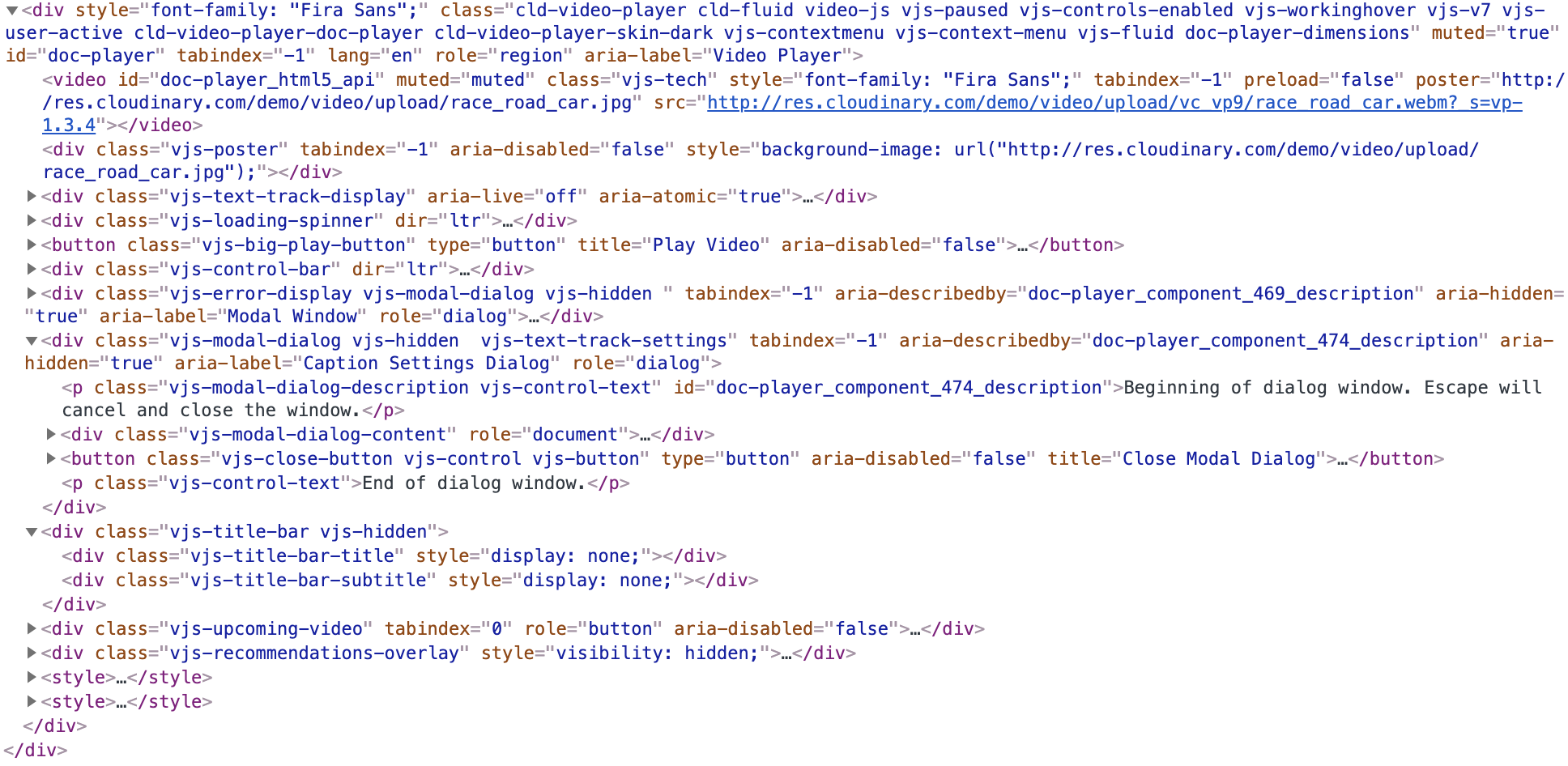Video Player
In this section we'll see how to get the Cloudinary Video Player running on a static web page.
Exercise: Loading Libraries
JavaScript libraries available on CDN or npmjs.org. We'll use both in this course. For this section, we've mocked a build process that installs node_modules and copies them to a my_node_modules directory. This allows use to serve this page from github.io without uploading node_modules.
There are 3 dependencies for the full video player that need to be installed.
npm install lodash cloudinary-core cloudinary-video-player
Look at code and open in browser: video-player/video-player.html
The HTML below shows that we need to reference a CSS file, lodash (a JavaScript utility library), cloudinary-core (the JavaScript SDK), and cld-video-player.min.js (the video player).
<head><link href="./my_node_modules/cld-video-player.min.css" rel="stylesheet"/></head>...<script src="./my_node_modules/lodash.js" type="text/javascript"></script><script src="./my_node_modules/cloudinary-core.js" type="text/javascript"></script><script src="./my_node_modules/cld-video-player.min.js" type="text/javascript" ></script>
Exercise: Rendering a Video Tag
Look at the HTML portion of the index.html. We need to render an HTML5 video tag and supply and identifier, in this case and id. We can add standard attributes such as controls and muted. We can also use video player styles the we get from the CSS imported above. The cld-fluid class will cause the video to fill the container which, in this case is a 400px div.
<div style="max-width:400px"><videoid="doc-player"controlsmutedclass="cld-video-player cld-fluid"></video></div>
Exercise: JavaScript Instantiation
Because we're loading JavaScript libraries, the code is wrapped in a DOMContentLoaded event listener.
We start by instantiating the SDK cloudinary object and providing the cloud name from which the video will be delivered. For this example we instantiate the video player form the cloudinary object by referencing the element id, doc-player. Finally, we provide a public ID as an argument to the player's source function.
document.addEventListener('DOMContentLoaded', async () => {const cld = window.cloudinary.Cloudinary.new({cloud_name: 'demo'})const demoplayer = cld.videoPlayer('doc-player')demoplayer.source('race_road_car')})
What is rendered?
If you inspect the elements in the rendered video player, you'll see that the JavaScript has wrapped the initial video tag in a number of other elements. These elements create the video player. They provide a set of DOM objects that fire events that can be listened to an acted on, as well as styled.
